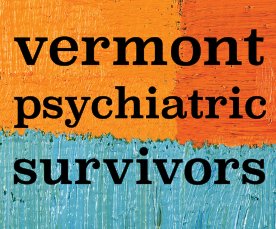Roughly 800 homeless Vermonters lost their state-funded motel placements on June 1. The government didn’t collect data on where they went, but service providers have made observations of their own in the months since.
The group in question had not met vulnerability criteria – by virtue of disability or old age, for instance – that qualified 2,000 other beneficiaries of the pandemic-era emergency housing program for voucher extensions that, thanks to additional funding that the legislature allocated during the veto session on June 20, will last until next April.
In the lead-up to June 1, advocates, state officials, politicians, and journalists debated what would happen to the evictees.
Some argued that they would mostly land on their feet. After an influx of federal COVID-19 funds opened doors to motels across Vermont to all comers, the state’s homeless tally (which includes everyone sheltered by the emergency housing program) suddenly jumped from 1,110 to 2,591, generating suspicions that more than a handful within that count had chosen voluntarily to forgo rental housing for the no-questions-asked promise of a free room.
According to this rationale, upon the offer’s withdrawal, the motel residents would return to their prior living arrangements. But at the Champlain Valley Office of Economic Opportunity, Community Action Network Director Travis Poulin cast doubt on that premise.
“I have never in my experience, nor have any of my staff reported to me that they are working with someone who was stably housed and chose to become homeless so they could get a motel,” Poulin said. “I have never heard of that happening. I have never seen that happen.”
CVOEO offers case management and coordinated entry services to homeless and at-risk residents of Chittenden, Franklin, and Addison counties, helping them to find housing. It also operates a Community Resource Center, where clients can get meals, clothing, and internet access.
“We definitely were doing a lot of outreach leading up to June 1, trying to connect with people one-on-one. Many of the folks already had housing navigators,” Poulin recalled, “either through CVOEO or through one of the other agencies providing services. Some folks I know did go back to literal unsheltered houselessness. Some folks were able to move into apartments because the [coordinated entry] process had already been started and was just coming to an end around the same time.”
“It continues to be a challenge,” he continued. “We’ve got more people experiencing houselessness now than we’ve ever worked with before to this point, and also people requesting financial assistance to prevent the loss of housing. It’s an extremely busy time.”
Poulin also reported “an uptick in the number of new faces at the Community Resource Center” in Burlington.
In White River Junction, Upper Valley Haven Executive Director Michael Redmond shared similar observations.
“We have seen, for us, an increase in the number of people who are camping, in that we purchase tents and other equipment that someone would need – tarps, sleeping bags – and we have given away a ton: over 50, last time I checked, since May,” he recounted.
In addition to running a temporary shelter, Upper Valley Haven provides other services, including a public shower, whose usage it tracks. The numbers have gone up this summer.
“We have seen increases in the number of people coming to our food shelf, which could be a lot of reasons associated with that,” Redmond added. “But we have routine days now where we have over 100 visitors to our food shelf. More typically, a year ago, it was more in the 70s. Last year, in May, the high number was 77, I think, once. And we’ve gone over 100 many times, 108 being the highest.”
At Groundworks Collaborative in Brattleboro, Director of Development & Communications Libby Bennett told a nearly identical story.
“We’re busier every day in our drop-in center here on South Main Street. We’re seeing a lot of new faces, and we’ve been at capacity for shelter beds just about every night. We’ve distributed, I would estimate, about 55 tents, including replacing some tents for people whose tents were a total loss after the heavy rains,” she said.
Bennington County Coalition for the Homeless Executive Director Chloe Viner Collins criticized the state for its reassurances that 800 June evictees would “self-resolve.” Despite her familiarity with the academic literature on homelessness, she said she’d never encountered the term in a case study.
“I will tell you what I think ‘self-resolve’ means,” she said. “I think what it means is when they’re out in the woods, they can’t get captured for [the Homeless Management Information System] or coordinated entry. Basically, you’re only homeless if you’re entered into our system of homelessness and captured as an individual in our database.”
“I don’t think it means that they’ve successfully found housing,” she continued. “I’ve asked a lot for data. That doesn’t exist.”
By Viner Collins’s judgment, conditions in Bennington – which doesn’t have a 24-hour public restroom, a cooling shelter, or a public sharps disposal – have deteriorated visibly since June 1.
“What has happened is exactly what I told everybody would happen. For the first time ever, the main park in town, called People’s Park or Rotary Park, is having to be closed down constantly by the police,” she said. “There’s tons of complaints by everybody that Bennington is disgusting and full of needles and feces.”
Vermont’s next annual point-in-time homelessness count will take place in January, led by the Vermont Coalition to End Homelessness and the Chittenden Homeless Alliance.

